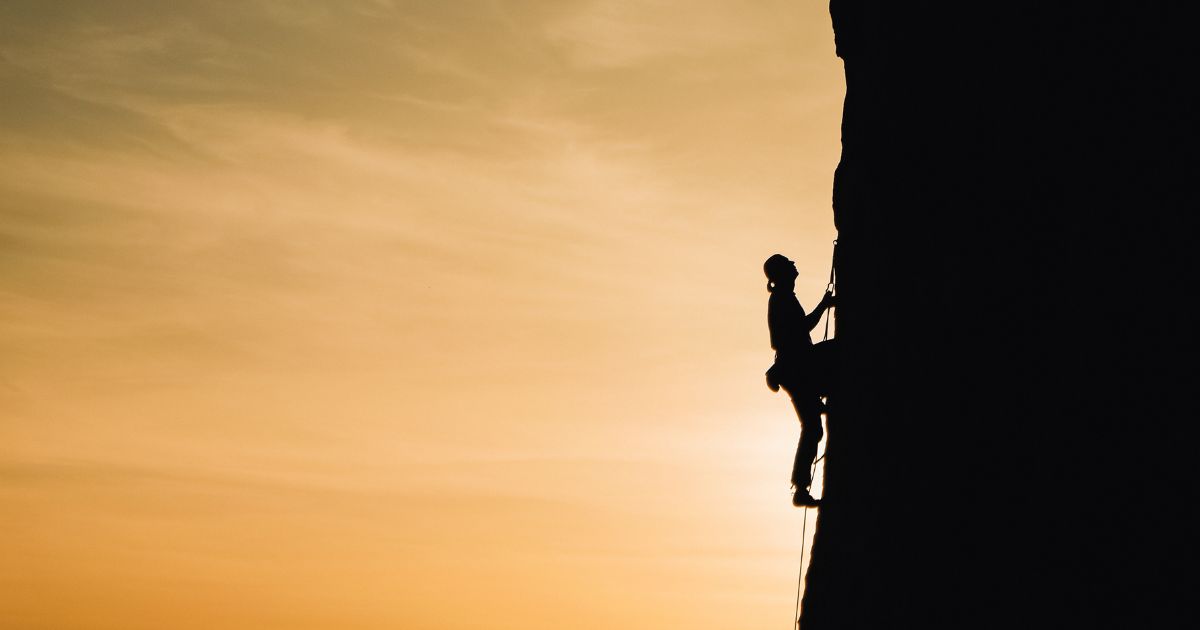Table of Contents
7 Biggest Climbing Mistakes And How To Fix Them
How To Fix Your Climbing Mistakes? Rock climbing is an exciting and demanding sport that demands a careful balancing act of strength, skill, and mental toughness. When climbing for the first time, novices frequently have to rely on trial and error, making frequent mistakes that impede their advancement. This essay explores the 7 Biggest Climbing Mistakes And How To Fix Them and reveals innovations that can help you reach new climbing heights.
Read More: 70 Beginner Climbing Tips: The Most Important Techniques & Skills
Hinging the hips to enhance the distribution of weight
The Mistake
A significant finding within the climbing world is the inadequate turning of the hips into the wall. To minimize strain on the upper body and maximize weight distribution to the feet, this technique is essential.
The Fix
Make sure your hips are in contact with the wall to improve this move. Make sure your feet are placed precisely so you can twist and pivot your leg with ease. Furthermore, generates resistance by exerting downward and outward pressure using both footholds.
Intentional Practice Regarding Junk Mileage
The Mistake
Many climbers tend to put good technique last and concentrate only on reaching the top. This method, referred to as “junk mileage,” impedes the development of skills.
The Fix
Adopt a deliberate practice mindset that prioritizes quality over quantity. Choose sub-maximal climbing on more manageable boulders and focus on improving your technique and efficiency. This deliberate strategy helps new climbers gain proficiency.
Accurate Positioning about Mistake Holds:
The Mistake
Effective climbing is hampered by the frequent mistake of mispositioning about holds. It is essential to know which way to pull on each hold to position your body optimally.
The Fix
Take into account the orientation of the holds and modify your posture accordingly. When performing side pulls or slopers, make sure your movements are in line with the orientation that works best for the hold. This accuracy greatly increases the efficiency of climbing.
Read More: 8 Essential Tips for Outdoor Rock Climbing Beginners
Careful Hand Positioning and Navigation.
The Mistake
Erroneous hand placement and a failure to read the route can impede advancement. Climbers frequently charge into ascents without having a clear idea of the holds they are aiming for.
The Fix
Before climbing, spend some time reading the route. Recognize the kinds of holds you’ll come across and adjust your hand placement accordingly. To improve your climbing strategy, take deliberate route reading and slow down as needed.
Using Visualization as a Crucial Climbing Ability.
The Mistake
Ignoring the role that visualization plays in climbing can be detrimental to advancement. Climbers may rush through ascents without adequate planning, or they may disregard this skill.
The Fix
Try practicing first- and third-person viewpoint visualization. Play through your moves, imagining yourself ascending. This improves your capacity to organize and carry out movements with greater efficiency.
Willingness to Adjust
The Mistake
Navigating difficult sections can become more difficult if you are unable to adjust and improvise while climbing.
The Fix
Be ready to improvise in the face of unforeseen circumstances. By helping you to visualize possible movements, visualization enables you to quickly adapt and overcome obstacles.
Prevent Overstretch by Giving Your Foot Movement Priority.
The Mistake
Stretching too far and concentrating only on handholds can result in unstable positions and make movement challenging.
The Fix
Make sure your feet move first to create a solid foundation. When faced with a stretch, think about returning your hips to the wall by adopting a rock-over position. This methodical footwork improves control and stability all around.
In summary:
Gaining proficiency in these core climbing skills can help novices reach new heights. Using these innovations to improve your climbing will improve your skill set, from intentional practice and visualization to exact body positioning.
Related posts:










Discussion about this post